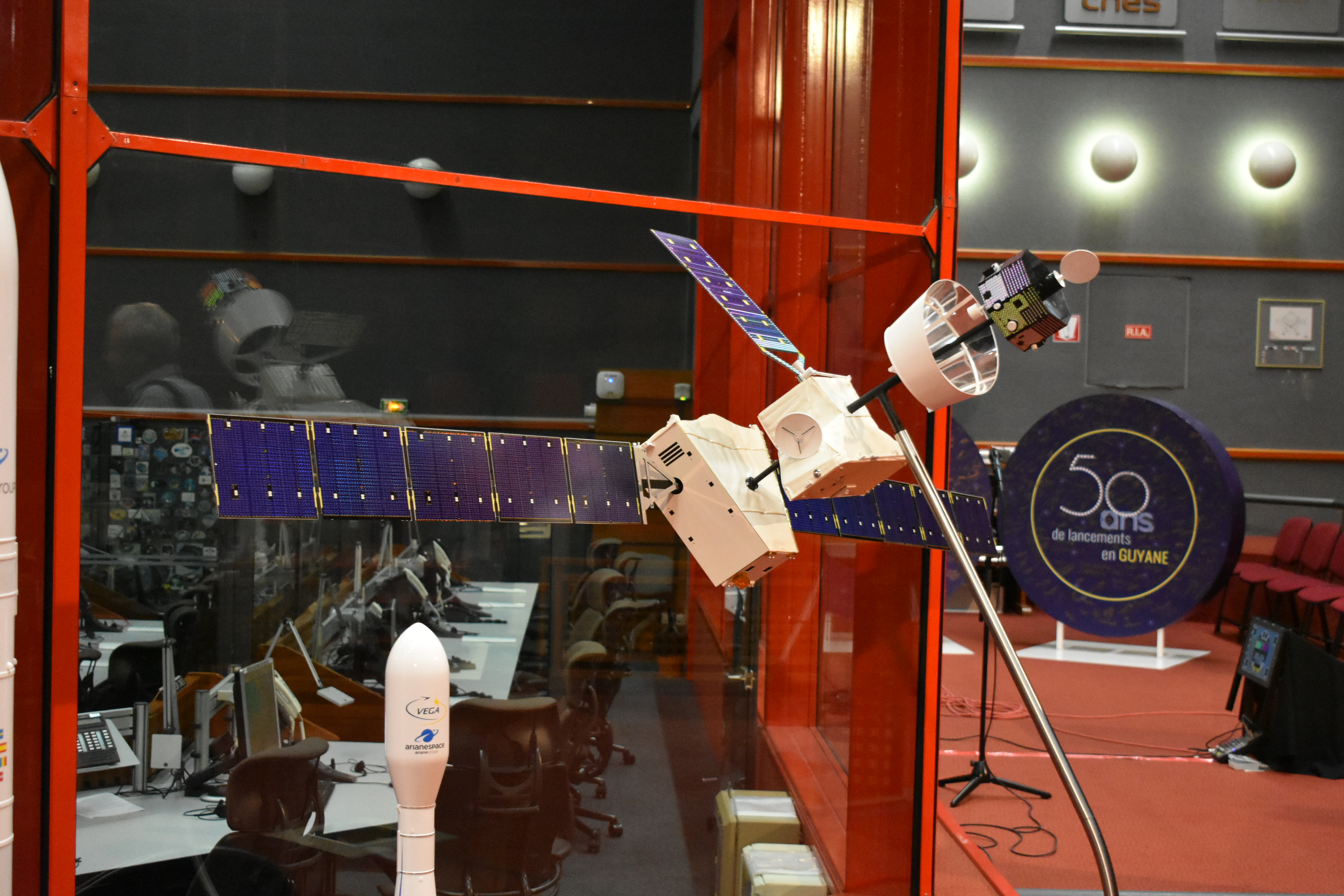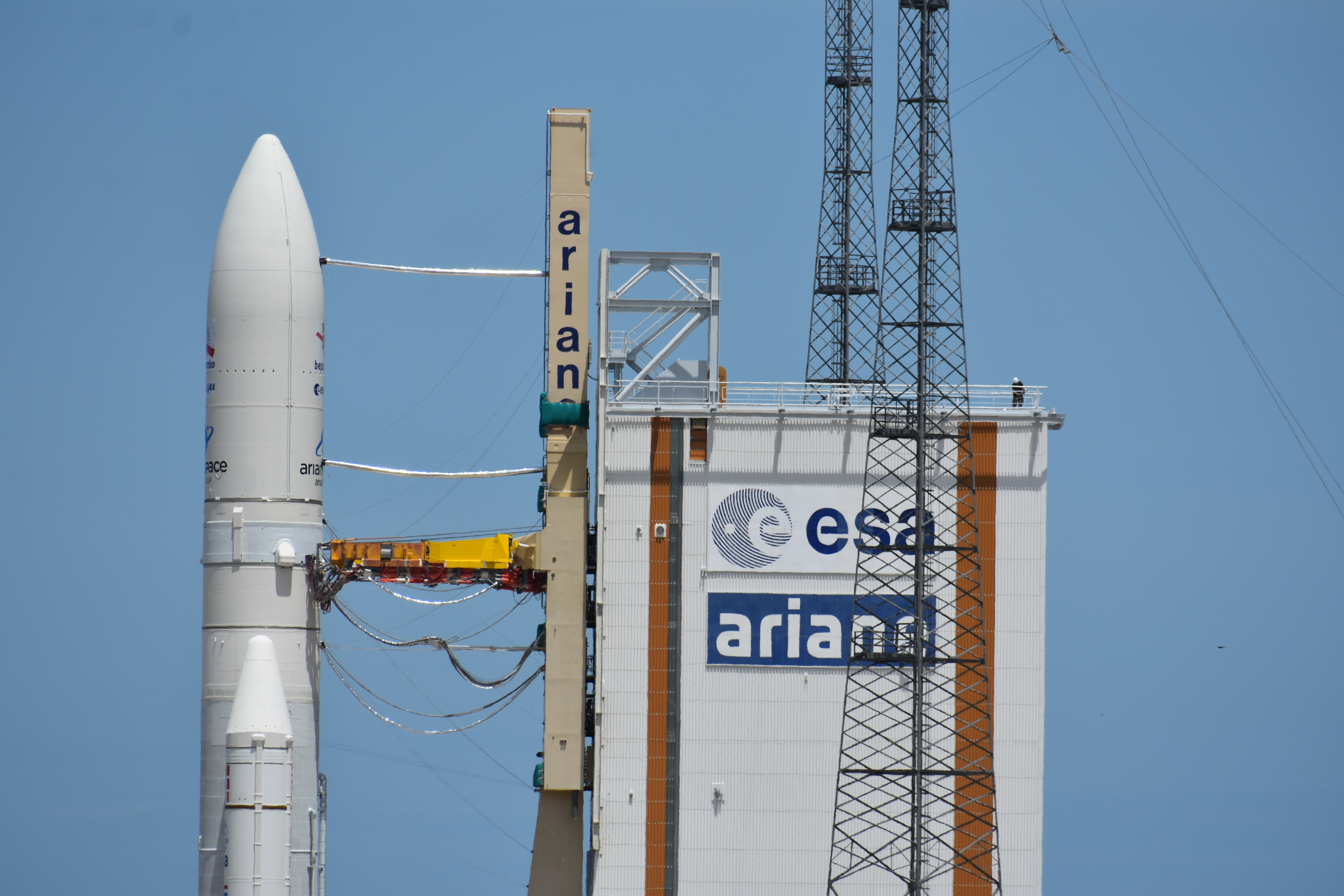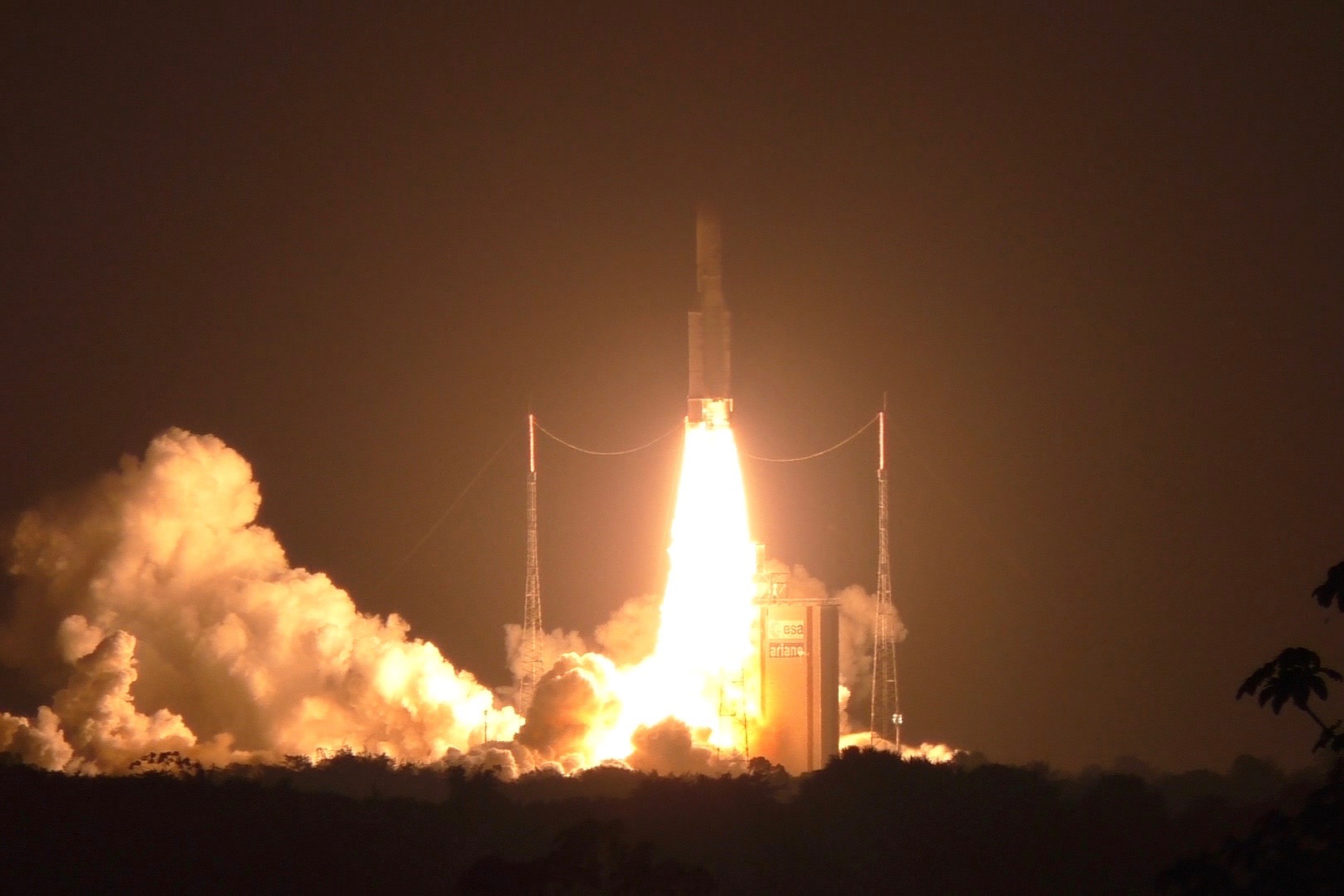BELA – The Bern altimeter’s launch to Mercury

BepiColombo blasted off to investigate Mercury. Nicolas Thomas, Co-Principal Investigator of the instrument BELA and Director of the Physics Institute of the University of Bern, experienced the launch first hand. Here are his impressions.
By Nicolas Thomas
On the way
BepiColombo will launch from Kourou in the morning (European time) of October 20 2018. Having spent 15 years working on the BepiColombo Laser Altimeter for this mission, I am going to treat myself and go to the launch. I could have used project funds to fly there independently but I decide to take the VIP plane. ESA normally charters a flight to its launches to carry all the ESA executives, the industry leads, the principal investigators and some journalists. It goes from Paris this time. Just one thing to prepare. I have to have a yellow fever vaccination otherwise they don’t let you on the plane. There are some nasty insects in French Guiana…. And some nasty snakes…. And some nasty spiders…

A model of BepiColombo at the “Jupiter” mission control centre in Kourou. (Photo Nicolas Thomas)
So I get myself to Paris and stay close to the airport overnight. The meeting time is 09:30 and the ESA organizational staff are waiting in Terminal 2E of CDG for us. We get folders with the programme and they guide us to a priority check-in. It is a special flight so things are much smoother than the usual Charles de Gaulle airport chaos. The flight is carrying the Director General of ESA, the Directors of Science and Launchers, the head of the Italian Space Agency, the Swiss State Secretary for Education, Research and Innovation and … and … and… I know many of the people onboard (even one or two of the journalists) and so there are conversations and gossip every time you get up. Not all PIs are onboard. Some went to Kourou early but Glassmeier (PI Magnetometer), Iess (PI Radio Science), Bunce (PI X-ray spectrometer) and a couple of others are also onboard. I am surprised to see Ralph McNutt from the MESSENGER team as well. He flew from Washington to Paris in order to pick up the flight to Cayenne. This is the modern world.
There is a certain tension. BepiColombo was not the simplest project and it is one that needs to be successful for the agency. If the spacecraft ends up in a big ugly mess spread out over half the jungle (like Cluster did), it will have consequences. We land after 9 hours and, as expected, it is very hot and humid.
Things to do
The launch as a viewing spectacle will actually last less than 5 minutes. But you are in French Guiana for 48 hours. So a programme has been prepared … and it is full. We get to a hotel, drop off our bags, and go straight to the first reception. This follows a trend of most launches I have been too. Food and drink is available in an over-abundance. Despite the temptation of free alcohol (including a local rum with cane sugar and limes that went down very well), I stay moderately sober knowing that tomorrow is going to be a busy day.
We are woken at 7 although jetlag dictates that I’ve been awake for several hours already. The time difference to Europe is only 5 hours but it is not insignificant. After breakfast we are taken to the CSG in Kourou to listen to a briefing where there are speeches from 6 people connected to the launch describing the launch and the mission. Then the fun starts. After a coffee we are taken to the launch facilities. We get to see the inside of the assembly building. Instrument scientists are used to building small intricate pieces of equipment. This however is massive scale engineering. The building is 60 metres high and everything is truly massive.

The spacecraft with the fairing manufactured by RUAG in Zurich. (Photo Nicolas Thomas)
Then off to the launch site. We are less than 2 km from the rocket at this point. They pass out gas masks in case something explodes but none of us take it particularly seriously. There is a water tower close to the pad that allows Arianespace to cool the pad rapidly during the launch. This is the closest we get to the rocket and there is a lot of picture taking. One can see the fairing (manufactured by RUAG in Zurich). There is not much activity yet. Fueling begins later in the day. Then back to a hotel for lunch before a second round of visits. We get to see the Soyuz launch facility which is completely separate from the Ariane area because Soyuz is operated by Roscosmos and the teams are totally different. We see an antenna which will be used to track the launch. An engineer moves it for us. It is surprisingly quick. And then to the Ariane 6 site. This is again massive construction. The funnels that take the engine exhaust away from the pad are already constructed. They are enormous. It is very very hot, horribly humid, and dusty. I have difficulty imagining how people can work in these conditions.
As we travel and walk around, you catch up with what people have been doing. You chat to some. Some people you don’t know. They don’t know you either. They have worked on a completely different aspect of the mission and have no clue what the payload does or who has done what on the spacecraft. There are other people who have retired but worked on Bepi before they were replaced late in the programme. Talking to them is always nice because they are interested in what happened and many of them were extremely good at their jobs.
Preparing to launch
The site visit is quite tiring although you spend a fair amount of time on a bus. Jet-lag doesn’t help. We all gather at a restaurant that faces Devil’s Island and drink yet another rum punch while making jokes about Steve McQueen. I walk to the edge of the restaurant property and a security guy runs after me. He tells me in rapid French that I have to watch out for thieves and I should go back. Poverty always seems to be a stone’s throw away. Then more food appears. But at 20:00 it is time to get to the bus to be taken to the viewing site. There are several. We will be 5 km from the pad. This is when it begins to get nervous. There are about 150 people at the site. We have to wait for 90 minutes for the launch. That means more coffee and food. But now with a few mosquitos. It is not so bad. The telephoto lenses are set up. Several people who took a different route to Kourou are now present. A couple of old friends turn up. We gossip. I have become quite edgy and don’t particularly want to talk. There are TV screens showing a live broadcast by ESA TV about the launch. There are bits of video about the mission with PIs talking to camera. Somebody from the Swiss Space Office is not impressed by the fact that I am not one of them. Well, nobody asked and it is somebody else’s turn! There’s some lightning around. But I am pretty sure it’s not close to the site. Everything proceeds. After T-7 minutes, if anything stops the count then the launch will be scrubbed for 24 hours. But the clock keeps ticking. And then it is time.
Launch

The launch of BepiColombo on 20 October 2018. (Photo Nicolas Thomas)
It is a night launch. On TV you see clearly what happens at the rocket but it doesn’t show you just how bright the sky becomes. And then the sound arrives. To me, this is the feeling of a launch and why one should experience one first hand. The vibration in the belly and the characteristic noises are unique. The vehicle rises. It is not really fast at first. This varies a lot between launchers. But then it rises and begins to curve away. The sky is full with thin cloud. This actually enhances the scattered light effects. After 90 seconds or so, the boosters separate. You can just see them if you squint. The vehicle remains visible as a bright point of light for some time. But basically the spectacle is over. You photograph the smoke hovering over the vacated pad. You move over to the TV screens to watch what is happening in the control room. It looks really good. One of the payload interface engineers who watched with us is pacing around smoking a cigarillo. After 20 minutes, the spacecraft separates from the launcher. Bepi is on its own. Arianespace have completed their job and applause breaks out. But most of us know that the payload interface engineer is nervously pacing for a reason. The spacecraft now has to perform. The solar panels must deploy and the spacecraft must take autonomous control.
Delight, relief, or something else?
A Swiss journalist comes up to me and asks me for a quote. He is not happy with my answer. He wants me to tell him how wonderful everything was, how beautiful it was and so on. But the feeling I have is somewhat different. I became a member of the Bepi science definition team in 1998 (with Peter Wurz by the way). Twenty years is a long time and many things happened – not all of them good. Projects often go through difficult periods. BELA was no different although occasionally more extreme with critical political, technical and managerial issues threatening its completion at several times in its development. Getting a functional, compliant, state-of-the-art instrument onto any spacecraft is not something you can take for granted. It is a huge effort from dozens of people contributing their expertise despite major challenges. And that’s what made the launch of Bepi for me a sort of relief. BELA got to the pad and is on its way to Mercury. Nothing can now change that. Time to breath out rather than chuck hats in the air.
Afterglow
There’s a reception organized after the launch with champagne. I don’t want to drink. With the tension and stress gone, I only want to sleep. Most others are the same and we quickly get the tour guides to organize the bus back to Cayenne, a 1 hour drive. It is after 2 am when we get back to the hotel and we have to be awake at 7 for the next event – a trip to the market in Cayenne followed by yet more food and alcohol. But the day is brighter, too. It is time to get the plane back from Cayenne to Paris and all indications are that the spacecraft is OK. It starts to sink in. We have built the most complex instrument flying on a major spacecraft to the planet, Mercury. Beat that!
Media release of the University of Bern
BepiColombo Laser Altimeter – BELA
Media release of ESA

